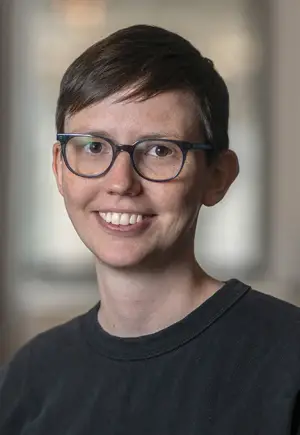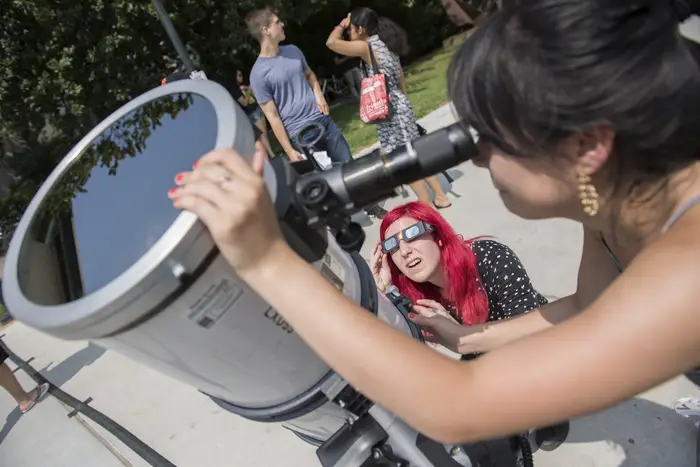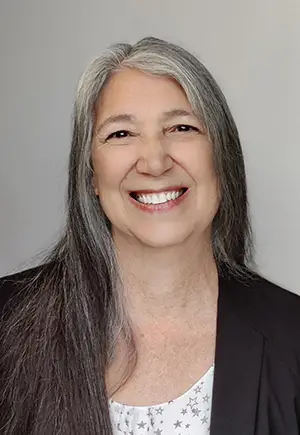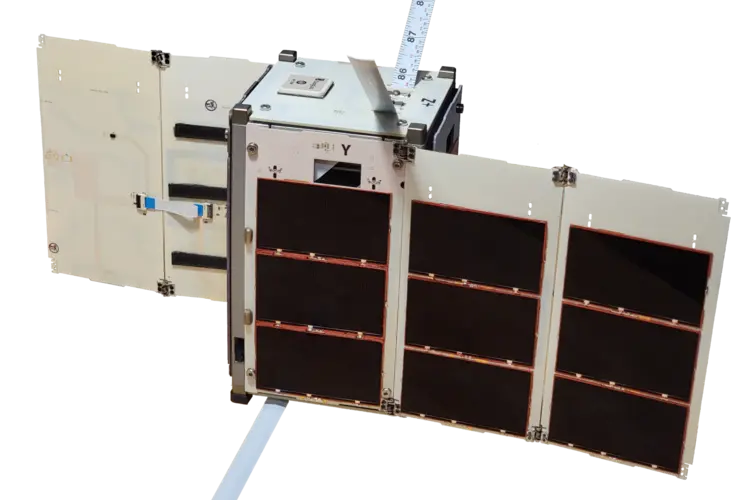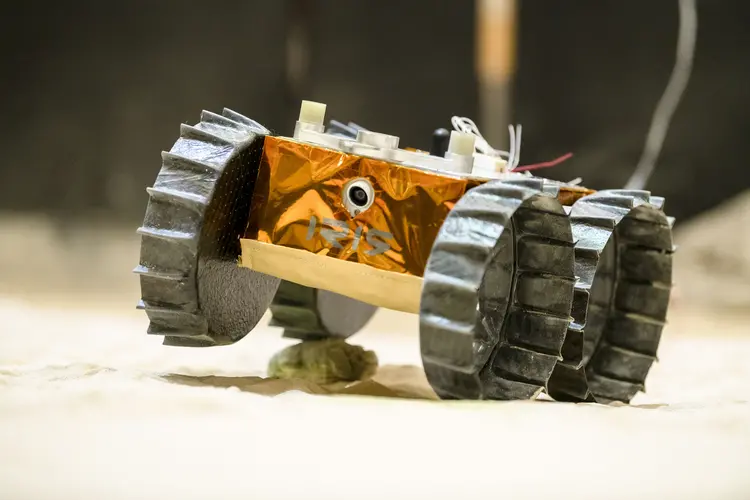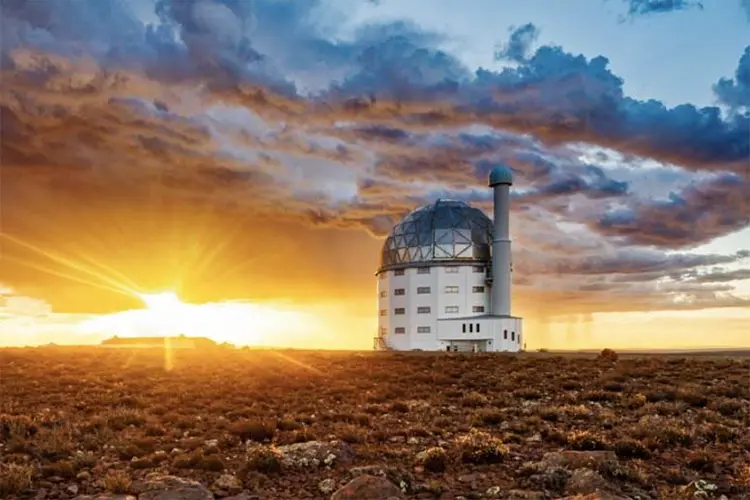Carnegie Mellon Prepares for Eclipse
Media Inquiries
An astronomical phenomenon will overshadow day-to-day work on Monday, April 8, for students, faculty and staff at Carnegie Mellon University. Between 2 and 4:30 p.m. EDT, the moon will pass between the Earth and the sun, causing a solar eclipse.
“This particular eclipse passes over many highly populated cities,” said Katie Breivik(opens in new window), assistant professor of physics(opens in new window). “You’re really going to notice that we are actually moving in space.”
From Pittsburgh, viewers will see the moon cover over 97% of the sun. Many cities within two hours of Pittsburgh, such as Akron, Cleveland and Erie, will be in the path of totality, where the moon blocks 100% of the sun’s light from reaching Earth. In those locations, the outer atmosphere of the sun known as the corona will be visible.
Breivik, Physics Special Lecturer Diane Turnshek(opens in new window) and the Carnegie Mellon Astronomy Club, also known as AstroC(opens in new window), are preparing for the eclipse and reaching out to the Pittsburgh community and beyond.
Art on Earth
Breivik served as a consultant on Eclipsing, a temporary sound walk designed to be experienced at Austin’s Lady Bird Lake from March to April. Created by Annie Saunders and Andrew Schneider, participants download an app and listen to audio which guides a walk through Zilker Park while sharing information about the history of the park and Austin, how eclipses work, and how science affects people’s daily lives.
In recorded interviews with Saunders and Schneider, Breivik explained concepts like the physics of black holes, what atoms are made of and how cosmically unlikely eclipses are — the Earth, the sun and the moon have to be aligned in a specific trajectory and at specific distances. If the moon was closer to the Earth, people would not be able to see the corona; if the moon was further from the Earth, eclipses would not happen at all.
In an interview with the Long Center(opens in new window), an art organization hosting the soundwalk, Schneider said eclipses are all about being in the right place at the right time.
“And all of Austin is going to be in the right place at the right time,” he said. “The whole community will have access to this incredible celestial event. But we can also scale this down and see how it is at play in our daily lives. The cosmic timings of our trips to the grocery store — how we met the people we fell in love with — and the things that almost happened but never did — every decision or nondecision contributes to our now and our collective now — which I think is cool.”
Breivik said work between artists and scientists provides ways to find commonality.
“A lot of people commonly feel comfortable interacting in art spaces, and scientists feel comfortable in science spaces, but there isn’t a ton of overlap,” she said. “This is a way of bringing those two groups together in a way they can both enjoy.”
Breivik said that the project came at the right time for her.
“I had just started teaching right as we started working on the project, so getting perspective from Annie and Andrew and the things they find interesting helped me translate what I’m doing and the science I’m teaching to my class,” Breivik said. “It’s been really fun.”
Education Outreach
Students across the greater Pittsburgh region are learning eclipse science and safety thanks to Turnshek, who has instructed a physics teacher at Allderdice High School and spoke to students from the Ellis School and Brashear High School. She also shared the science behind the eclipse to students in Carnegie Mellon’s spring science writing course.
“No one is tempted to look at the sun on any regular old day,” Turnshek said. “It is blindingly bright and hurts to look at. When it is partially covered by the moon, it is more tempting because it is possible to do so — but don’t.”
Turnshek emphasizes safety(opens in new window) while taking in the unique experience. During a solar eclipse, no one should look directly at the sun without eclipse glasses(opens in new window). Those without access to eclipse glasses can experience the eclipse through a pinhole camera(opens in new window), through specially approved telescopes with solar filters at the end, or by cupping their hands in front of them and looking down to view the projection on the ground.
“If it’s your first time experiencing a total eclipse, just take it in. The minutes go by so very quickly,” said Turnshek who added that during the eclipse the temperature will drop up to 10 degrees Fahrenheit. Animals tend to go quiet as the sky darkens. “Just observe the chill on your skin, notice the eerie color change, spot any stars that come out, look at the behavior of animals around and watch people, as well as seeing the sun’s corona. Is the corona spiky? Is it round? Breathe. Relax. Feel the calm. Experience the sensation of day vanishing into night, then see the daylight reappear as quickly as it was extinguished.”
Turnshek will travel to the path of totality near Austin to experience the total eclipse with family and friends. However, she wanted to make sure students on campus could learn about the eclipse, so she has taught Carnegie Mellon’s Women in Science(opens in new window) club how to share safety and science information about the eclipse. On April 8, they will demonstrate the configuration of the sun, moon and Earth, and they will hand out eclipse glasses on campus. Turnshek said no matter where people see the eclipse, the day will be memorable.
“It’s always about the people you’ll be sharing the experience with,” Turnshek said.
Eclipse Excursion
AstroC Presidents Jacques Moye and Allison Weller are planning a field trip for members to travel to the path of totality in Akron.
“The experience of seeing totality is phenomenal, but partial eclipses are good to watch also,” Weller said. “Wherever you are on April 8, be sure to put on eclipse glasses and look up to see something memorable.”
Both juniors in physics who joined AstroC in their first year at Carnegie Mellon, Moye and Weller have worked with Turnshek on how to share safety and scientific information with the Carnegie Mellon community before they travel to Akron.
Both Moye and Weller emphasized that the eclipse would be an event to remember.
“If you’re still on the edge about seeing the eclipse, I would definitely consider it,” Moye said. “The next total eclipse in the U.S. won’t occur for another 20 years. I promise you won’t regret it!”
